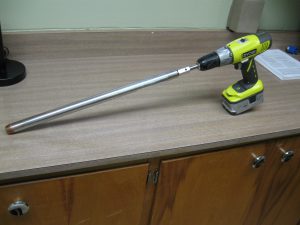Introduction
You can gain valuable information from a simple hay test that can help you balance the nutrition on your livestock. Hay is not just filler without value. By taking a hay sample and having it tested you can learn the crude protein, TDN, nitrate level as well as ADF and NDF depending on the lab you use. Knowing these values you can balance your animal’s diet appropriately without over or under providing its nutritional needs. Follow the steps below to collect a random hay sample for analysis.
Steps
- Collect samples from bales that were cut at the sample time. If you have multiple cuttings in your barn, collect separate samples for each cutting.
- If you test hay that is rolled in round bails, remove the outer crust to avoid collecting material that would be discarded by the animal.
- Use a hay probe to drill into the bale at a perpendicular angle. For each cutting collect 10 to 15 samples and mix it into a 1 gallon bag.

- Decide which lab to use; follow their submission procedure and include payment.
- Results should be available in 1 to 2 weeks and can include information such as crude protein, TDN, nitrates as well as many other valuable, measurable parameters.
Summary
If you don’t have your hay tested, chances are you are spending more money than you should, not making as much as you could and are probably shorting your livestock and/or your customers.
Additional information related to forage testing can be found on the University of Florida’s EDIS site by clicking here.
Or at the following YouTube site.
Contact the St. Johns County Extension Office (904 – 209 – 0430) if you would like assistance interpreting test results or for help balancing your animals ration.
 0
0
